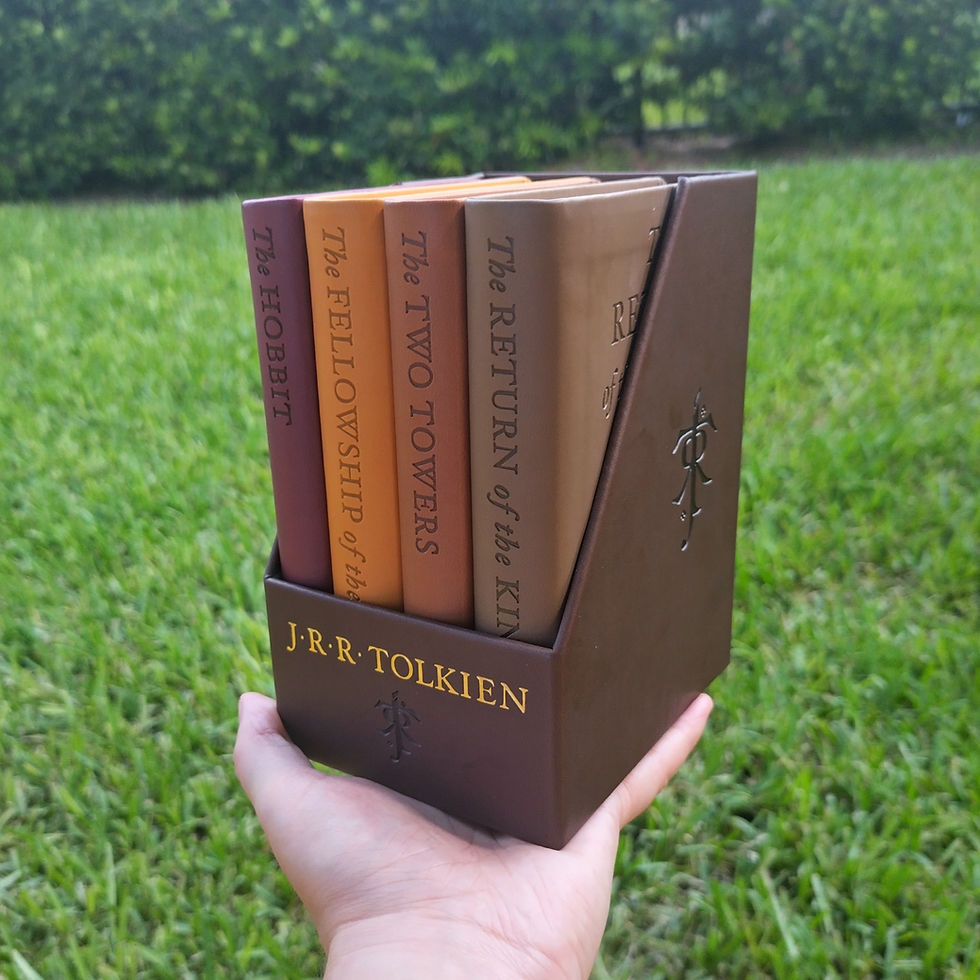
There are many great authors out there, some no longer with us, and some just getting started. Some of the most famous authors, specifically in the fantasy genre, are two of my personal favorites, J. R. R. Tolkien and his friend and colleague, C. S. Lewis. Together these two authors changed the face of fantasy writing for the better! The worlds they built and the characters they created are still known by both fantasy fans and those who don’t often read in that genre! It seems that, even if one doesn’t read much about fantasy, they still know who these two writers are and what works they published. But for today’s author focus, I would like to focus on Tolkien. So, let’s dive in and learn a little about who this author was and how his most famous books, The Hobbit and The Lord of the Rings, came to be.
A Brief Background
John Ronald Ruel Tolkien was born in South Africa on January 3rd, 1892 (reference 3). His father, a bank clerk, died in 1896, shortly after Tolkien’s birth (reference 2). After his father’s death, Tolkien’s mother moved him and his brother back to England, where he grew up in Bermingham. His mother, whose catholic beliefs influenced her son’s beliefs, passed away in 1904 (reference 1). After his mother’s death, Tolkien and his siblings were raised by a catholic priest (reference 1). Tolkien later fell in love with Edith Bratt, who eventually inspired one of his characters (reference 2). However, he was not able to marry her until he was released from his guardian’s legal authority and thus waited to purpose until he was twenty-one (reference 1).
Tolkien attended Exeter College, Oxford, even working with them later in his career to help develop the Oxford Dictionary (reference 4). Tolkien graduated in 1915 before joining the military, being a second lieutenant in the Lancashire Fusiliers (reference 3). His military service began rather slowly before he was deployed to the Battle of Somme, where he tragically lost multiple close friends (reference 3). Tolkien’s military service was cut short when he contracted Trench fever and was sent back on medical leave (reference 3). Though he served the military in other ways, he did not return to action due to a slow recovery from the fever (reference 3).
The Silmarillion, The Hobbit, and The Lord of the Rings
In 1917, Tolkien took to writing a history of a fictional world that would eventually be the basis for The Hobbit and The Lord of the Rings. This collection of the history and stories of his fictional world is called The Silmarillion and was said to have been written “partly to provide a setting in which ‘Elvish’ languages he had invented could exist” (reference 1). After being discharged from military service, he worked at Oxford and the University of Leeds (reference 5). Sometime during his years as a professor, Tolkien was inspired to write the first line of The Hobbit. It was while he was grading papers that he wrote the line “In a hole in the ground there lived a Hobbit” (reference 6).
During his time working on the Oxford Dictionary, he exercised his love of linguistics, studying etymology while he worked on the project (reference 5). Language was something he formed an interest in very early on, and he began inventing languages at the age of thirteen or fourteen (reference 6). In one interview, he described his view of languages saying, “Languages have a flavor to me…a new language is like a new wine or some new sweetmeat…” (reference 6). This love of language inspired the creation of the Elvin language Quenya. Tolkien later wrote The Lord of the Rings, saying in one interview that he wrote it as a sequel to The Hobbit, all of which he wrote because he could not get through other “fairy stories” without wanting to write one himself (reference 7).
Legacy
The Hobbit and The Lord of The Rings have influenced not only readers but writers as well. They have carried on his legacy as some of the most popular and commonly known fantasy stories. The books have all been made into highly popular movies, and more recently, The Silmarillion is being utilized to create a TV show, The Rings of Power, to try and explore Tolkien’s history of Middle-Earth. With these massive stories, collections of his fictional world’s history, and detailed languages changing the face of fantasy for us all, J. R. R. Tolkien is now known as the “father of modern fantasy literature,” a title I think very appropriate (Reference 5). His stories continue to hold their own against all other fantasy stories written since, and I don’t see them being overtaken in popularity any time soon.
Have you read The Lord of the Rings or any other works by J. R. R. Tolkien? Comment and let me know what you read. I would love to hear from you!
References
Reference 1: https://www.britannica.com/biography/J-R-R-Tolkien
Reference 2: https://tolkiengateway.net/wiki/Arthur_Tolkien
Reference 6: https://www.youtube.com/watch?v=NTz2-im7s9k
Reference 7: https://www.youtube.com/watch?v=-yCKXfz_wL8
Disclaimer: I am an Amazon associate and earn from qualifying purchases.


